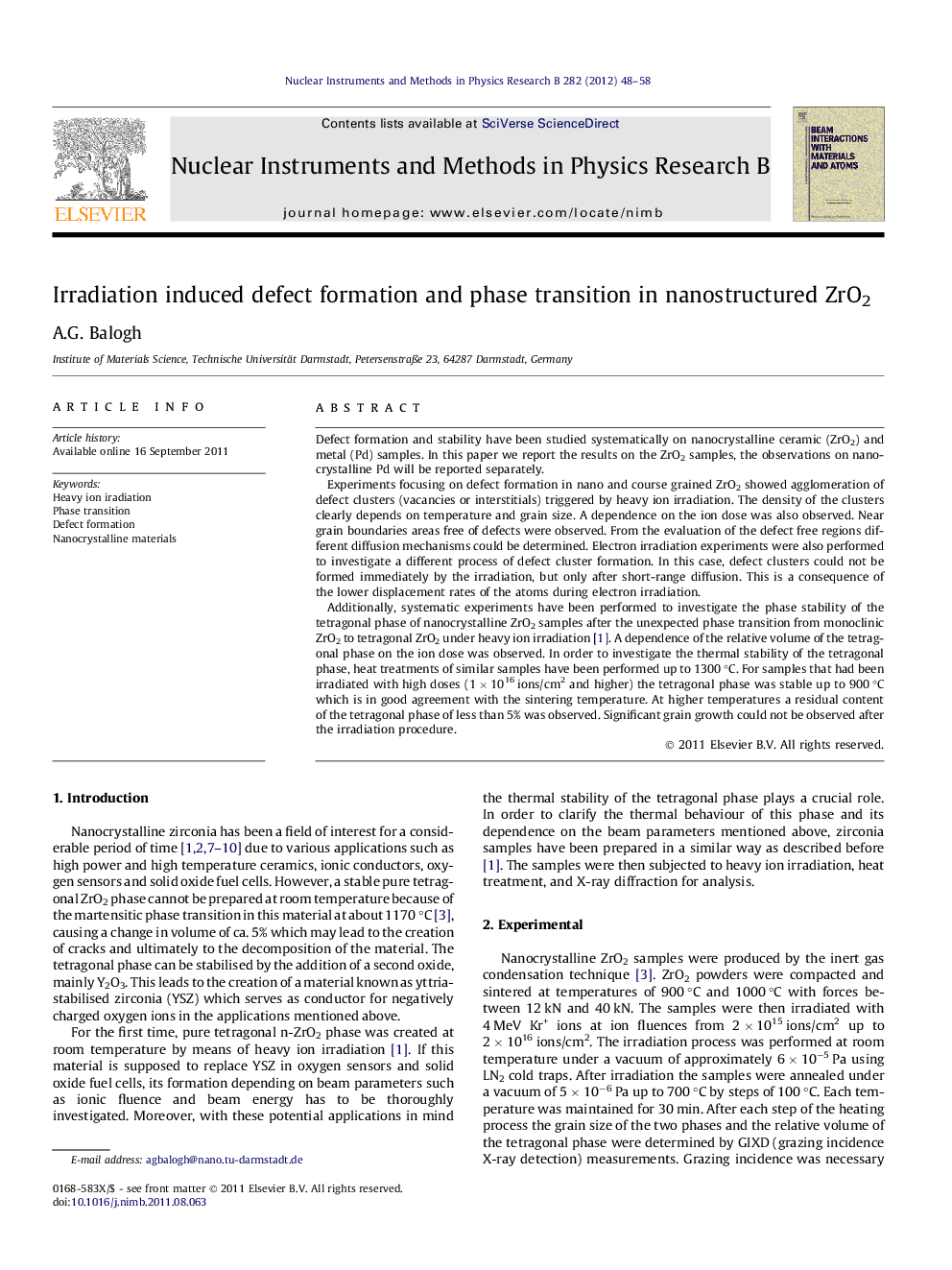| Article ID | Journal | Published Year | Pages | File Type |
|---|---|---|---|---|
| 1680762 | Nuclear Instruments and Methods in Physics Research Section B: Beam Interactions with Materials and Atoms | 2012 | 11 Pages |
Defect formation and stability have been studied systematically on nanocrystalline ceramic (ZrO2) and metal (Pd) samples. In this paper we report the results on the ZrO2 samples, the observations on nanocrystalline Pd will be reported separately.Experiments focusing on defect formation in nano and course grained ZrO2 showed agglomeration of defect clusters (vacancies or interstitials) triggered by heavy ion irradiation. The density of the clusters clearly depends on temperature and grain size. A dependence on the ion dose was also observed. Near grain boundaries areas free of defects were observed. From the evaluation of the defect free regions different diffusion mechanisms could be determined. Electron irradiation experiments were also performed to investigate a different process of defect cluster formation. In this case, defect clusters could not be formed immediately by the irradiation, but only after short-range diffusion. This is a consequence of the lower displacement rates of the atoms during electron irradiation.Additionally, systematic experiments have been performed to investigate the phase stability of the tetragonal phase of nanocrystalline ZrO2 samples after the unexpected phase transition from monoclinic ZrO2 to tetragonal ZrO2 under heavy ion irradiation [1]. A dependence of the relative volume of the tetragonal phase on the ion dose was observed. In order to investigate the thermal stability of the tetragonal phase, heat treatments of similar samples have been performed up to 1300 °C. For samples that had been irradiated with high doses (1 × 1016 ions/cm2 and higher) the tetragonal phase was stable up to 900 °C which is in good agreement with the sintering temperature. At higher temperatures a residual content of the tetragonal phase of less than 5% was observed. Significant grain growth could not be observed after the irradiation procedure.
